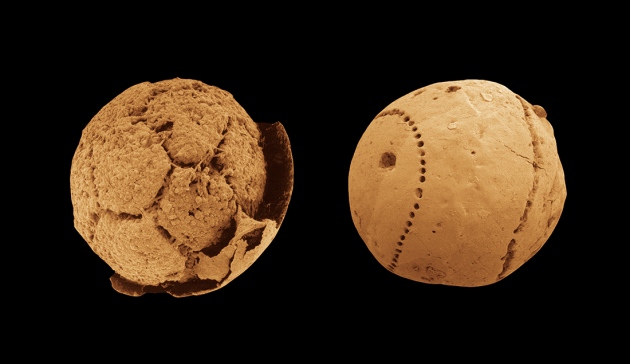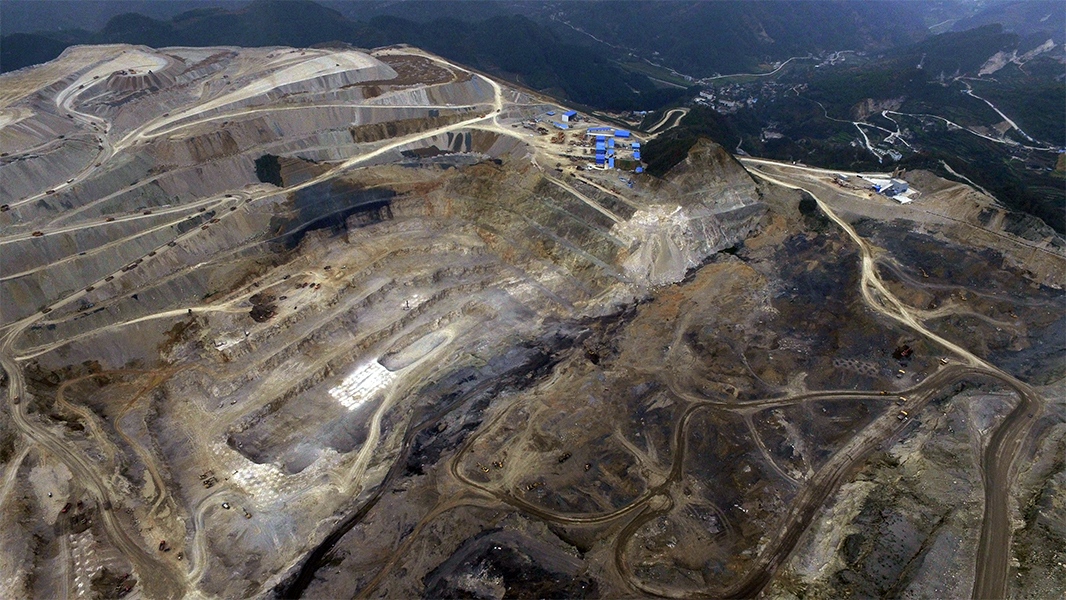
Tiny fossils from the Doushantuo Formation have been touted as the planet's earliest animals.(Shuhai Xiao)
Palaeontologists are fighting to save a site in China that contains fossils of some of the earliest animals on record. This month they gained a temporary halt to the phosphate mining that has already destroyed some fossil beds.
The threatened site is part of the Doushantuo geological formation in the Weng’an region of Guizhou province in southern China. It is rich in minerals that preserve soft tissues and cellular structures and became famous in the late 1990s, after scientists began finding well-preserved fossils of sponges and
These discoveries challenged the theory that virtually all major animal lineages emerged during the ‘Cambrian explosion’ some 540 million years ago. Microscopic fossils assumed to be embryos that were excavated from Doushantuo have, more recently, sparked debates over the origins of bilateral symmetry in animals.
“We may never find a comparable site and may lose the chance to truly understand early animal evolution on Earth,” says Dave Bottjer, a palaeobiologist at the University of Southern California in Los Angeles, who estimates that just 5% of the site’s fossils have been recovered. “If nothing is done, it will be a great loss,” he says.
On a visit to Doushantuo this month, palaeontologist Zhu Maoyan of the Nanjing Institute of Geology and Paleontology was stunned to find a newer fossil site, opened in 2015, completely stripped of fossil-bearing sediment by phosphate mining. The locale that produced the area’s first fossils had been destroyed years ago. And a third key fossil-hunting area, which produced most of the new fossils found in the formation in the past 15 years, was buried by a landslide that had been triggered by mining in 2014. “It is really a disaster,” says Zhu.

Fossil beds in southern China that have produced some of the planet's earliest animals are under threat from mining.(Maoyan Zhu)
Phosphate miners operated in Doushantuo before the palaeontologists got there and, to some extent, enabled discoveries by churning up fresh rocks, says Andrew Knoll, a palaeontologist at Harvard University in Cambridge, Massachusetts, who worked there in the 1990s. “But if mining has accelerated to the point that the Weng’an beds will soon be completely mined out, the benefits of fresh exposure are moot.”
The pace of mining has increased dramatically over the past two years, says Zhu. Over the past two decades, he and others had tried to convince the local government that the sites needed protection. But Zhu says he now realizes that these efforts, often hampered by miscommunication and high turnover of local-government officials, were not enough.
Fossil activism
Zhu and his colleagues turned to more forceful action. He organized a workshop, held on 2–3 April in Weng’an, and invited scientists, including Bottjer, to make a case for preserving the site. The coalition scored an early victory. Several days after the workshop, local-government officials ordered a halt to mining in the area, while they work out a strategy. Zhu says that measures are likely to include finding other sites for mining. He hopes eventually to get a central fossil-hunting zone, 1.2 square kilometres in area, closed to mining and designated a national geological park.
A solution that has been successful elsewhere is to have miners work in tandem with scientists, says Knoll. “It wouldn’t be difficult to employ a geologist to mine the main fossiliferous beds, which are not very thick, and store samples, possibly tons of them, for future research.”
But the hullaballoo might have created another problem, says Shuhai Xiao, a geobiologist at Virginia Tech, in Blacksburg, who worked at Doushantuo in the 1990s. Zhu's appeals have drawn attention from Chinese media, raising the site's profile among black market dealers. “So far, this site has not been on the radar of fossil dealers,” he says. “But this may change if there is a public demand for specimens from this site.”
Doi:10.1038/nature.2017.21869
Related stories
, dating to around 600 million years ago.
